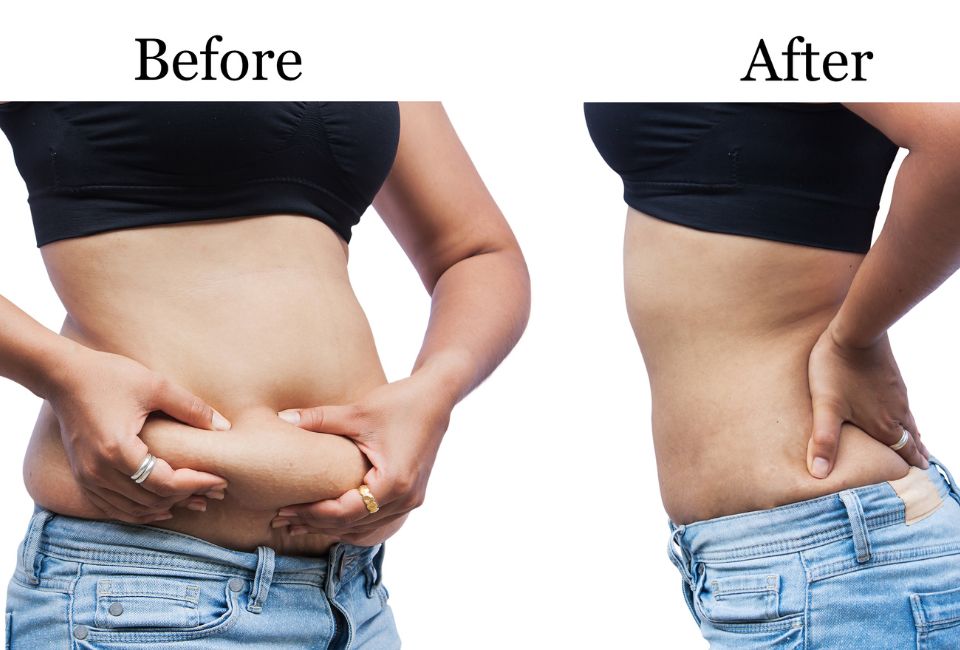Physical activity is an essential component of a healthy lifestyle, and it’s no secret that both running and walking are popular forms of exercise for many people looking to lose belly fat. While both activities can help burn calories and improve overall fitness, the question remains: is running or walking more effective for losing belly fat?
However, the most important factor for losing belly fat is creating a calorie deficit, which means burning more calories than you consume. Running generally burns more calories and is considered a higher-intensity activity than walking. Therefore, running may yield faster results if your primary goal is to lose belly fat. Walking can be more sustainable and consistent, which is important for losing belly fat.
In a study of 27 obese middle-aged women, those who did 16 weeks of high-intensity exercise training, like running, lost a lot more belly fat than those who did 16 weeks of low-intensity exercise training.
In another study, people who ran vigorously for 20 miles per week shed more visceral and overall body fat than people who walked 12 miles per week. The people in the walking group lost a few inches around their waists and hips, but not as much as those in the running group.
On the other hand, walking can still be an effective way to lose belly fat, especially if you walk briskly or uphill. Walking is also lower-impact than running, which can be beneficial for people with joint pain or injuries.
Also, Walking is often easier on your body, especially if you’re just getting started or are overweight. This means you may be more likely to stick with a walking routine. Consistency is key for fat loss.
A study published in the Journal of Exercise Nutrition and Biochemistry showed that Walking could help obese women burn fat and reduce the size of their waists. In the study, women with obesity who walked for 50–70 minutes 3 days per week for a total of 12 weeks, on average, reduced their waist circumference and their body fat. On average, the people in the study lost 1.5% of their body fat and 1.1 inches around their waist.
According to a different study, persons on calorie-controlled diets who walked for 1 hour 5 days per week for a total of 12 weeks lost more body fat and inches from their waistlines than those who only followed the diet.
The age-old debate: Is running or walking better for belly fat loss? In the quest for shedding those extra pounds around the midsection, it’s important to understand how it burns when it comes to losing belly fat. In this article, we will cover
- How to Burn Belly Fat
- What Burns More Calories Between Walking and Running?
- Walking Vs. Running: What’s the Best for You?
How to Burn Belly Fat

It’s impossible to target weight loss to a specific area, like only belly fat. And any program claiming to do so- is a con.
According to a study, six weeks of abdominal-only exercise had no discernible impact on waist size or the amount of fat in the abdominal region.
Usually, you have to work on your whole body fitness to burn belly fat effectively. Nonetheless, given that most of this fat is located around the belly, it will be among the noticeable parts that start flattening.
The only way to lose weight including belly fat is to consume fewer calories than what you spend calories, i.e. calorie deficit. There aren’t magic ways, unfortunately, no secrets. Just commitment and consistency!
Once you know how many calories you need daily, You can create your weight loss formula. You will lose weight if you consume fewer calories than this amount or increase your daily caloric expenditure through exercise.
Explains Audra Wilson, RD, CSCS, a bariatric dietitian and strength and conditioning specialist at the Northwestern Medicine Metabolic Health and Surgical Weight Loss Center at Delnor Hospital in Geneva, Illinois.
One pound of fat contains approximately 3,500 calories. To shed 1 pound of fat in a week, a person would require a deficit of 3,500 calories, or 500 calories per day.
She suggests consuming 250 fewer calories than your daily requirement, followed by a workout that consumes another 250 calories.
So when you ask which one burns more fat, Walking or Running, you’re really asking which are between Walking or Running burns more calories.
So, What Burns More Calories Between Walking and Running?
Several things affect how many calories a person burns when they walk or run. Including:
- body weight
- duration of exercise
- the intensity of the activity
A study by American Council on Exercise shows that walking and running are notable activities that help burn calories. According to the study, a person who is 180 pounds burns approximately 17 calories per minute while running. On the other hand, a person who weighs the same burns about 9.7 calories per minute when they walk. Running burns almost twice as many calories as walking during the same exercise duration.
Based on this study, a person weighing 180 lbs will burn
| Times of activities | Burn Calories by walking | Burn Calories by Jogging | Burn Calories by Running |
| 15 Minutes | 145 cal. | 208 cal. | 255 cal. |
| 30 Minutes | 291 cal. | 417 cal. | 510 cal. |
| 45 Minutes | 436 cal. | 625 cal. | 765 cal. |
| 60 Minutes | 582 cal. | 834 cal. | 1020 cal. |
Running also has a slightly higher “afterburn” effect than walking, which means that your body will keep burning calories after you’re done exercising until it goes back to its regular resting state.
The afterburn lasts five minutes longer for runners than for walkers, according to research published in The Journal of Strength and Conditioning Research.
Walking Vs. Running: What’s the Best for You?
Both running and Walking can contribute to belly fat loss, but the effectiveness may vary based on factors such as intensity, duration, and individual fitness levels. Here’s a comparison between the two:
Running:
- Higher intensity: Running generally burns more calories per minute than walking due to the increased intensity. It can elevate your heart rate and boost your metabolism, resulting in greater calorie expenditure.
- Time efficiency: Since running is more intense, you can cover more distance in a shorter amount of time. This can help you burn more calories and potentially contribute to belly fat loss.
- Impact on joints: Running is a higher-impact exercise that puts more stress on your joints, especially if you’re overweight or have joint issues. It’s important to wear proper footwear and gradually increase intensity to minimize the risk of injuries.
Walking:
- Lower intensity: Walking is a lower-impact exercise that is generally less intense than running. It burns fewer calories per minute but can still contribute to overall calorie expenditure.
- Accessibility: Walking is accessible to most people, regardless of fitness level. It’s a great starting point for beginners or individuals with mobility issues.
- Sustainability: Walking can be easier to sustain as a long-term habit since it’s less demanding and causes less strain on the body. Consistency is key for achieving and maintaining belly fat loss.
Ultimately, the most effective approach may involve a combination of both running and walking, depending on your preferences, fitness level, and overall health. It’s important to choose activities that you enjoy and can incorporate into your routine consistently. Varying your workouts can also help prevent boredom and provide additional fitness benefits.
Conclusion
So, in summary, both running and walking can help burn belly fat as cardio exercises. The main considerations are:
- Running burns more calories per minute, but Walking may be more sustainable, so consistency is important
- Diet and calorie intake have the biggest impact on belly fat loss, more than the specific cardio exercise
- Choose the cardio exercise you prefer and are more likely to stick with regularly
Ultimately, the best exercise for belly fat loss is the one that you enjoy and can stick to consistently. Whether you choose to run, walk, or do another form of exercise, make sure to combine it with a healthy diet to achieve the best results.
Extra Tips for Reducing Belly Fat
Below are tips that will help you lose belly fat with more success, especially with walking and running;
- Ensure that you walk and run, or either, for at least four to five days a week.
- Watch your diet and count your calories in order to eat less for a calorie deficit.
- Engage in tummy strength and resistance training, which burns more belly fat while creating muscle mass for a toned belly outlook.
- Celebrate the small achievements: even if you just managed half an inch reduction in the waistline, it is better than before and worth noting. After all, these small achievements count up to the bigger achievements.
- If you go to the gym, don’t compare yourself to others. Everyone has a different journey, and your journey and goals should matter most to you. Others should only act as motivation factors.
- Set realistic goals, and you can always move the goalpost further when you get there. It helps you realize that you can actually manage to make a step towards a smaller waistline.
Get More Info:

